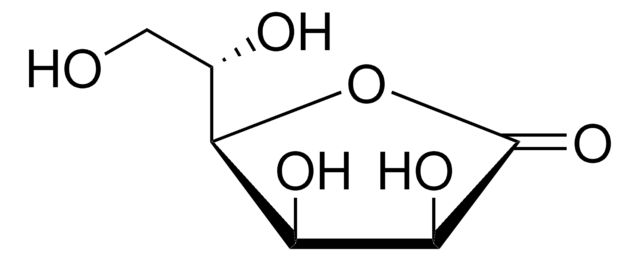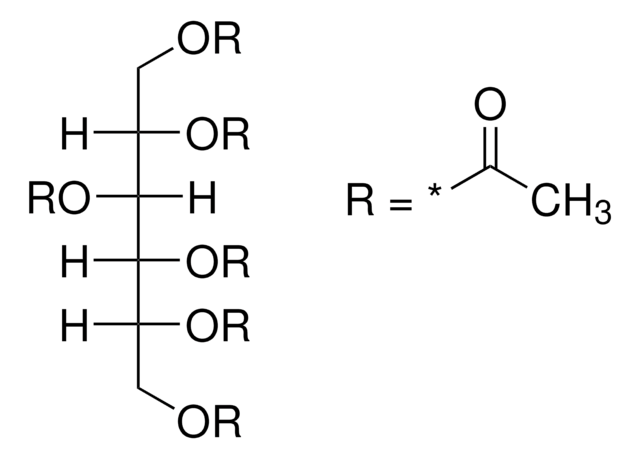240850
D-sorbitolo
99% (GC)
Sinonimo/i:
D-glucitolo
About This Item
Prodotti consigliati
Densità del vapore
<1 (vs air)
Livello qualitativo
Tensione di vapore
<0.1 mmHg ( 25 °C)
Saggio
99% (GC)
Stato
powder
Attività ottica
[α]20/D +104°, c = 0.4 in acidified ammonium molybdate
Colore
white
Intervallo di pH utile
5.0-7.0 (25 °C, 182 g/L)
Punto di fusione
98-100 °C (lit.)
Solubilità
water: soluble 182 g/L at 20 °C (68 °F )
Stringa SMILE
OC[C@@H](O)[C@@H](O)[C@H](O)[C@@H](O)CO
InChI
1S/C6H14O6/c7-1-3(9)5(11)6(12)4(10)2-8/h3-12H,1-2H2/t3-,4+,5-,6-/m1/s1
FBPFZTCFMRRESA-JGWLITMVSA-N
Cerchi prodotti simili? Visita Guida al confronto tra prodotti
Applicazioni
Azioni biochim/fisiol
Altre note
Codice della classe di stoccaggio
11 - Combustible Solids
Classe di pericolosità dell'acqua (WGK)
WGK 1
Punto d’infiammabilità (°F)
Not applicable
Punto d’infiammabilità (°C)
Not applicable
Dispositivi di protezione individuale
Eyeshields, Gloves, type N95 (US)
Scegli una delle versioni più recenti:
Possiedi già questo prodotto?
I documenti relativi ai prodotti acquistati recentemente sono disponibili nell’Archivio dei documenti.
I clienti hanno visto anche
Global Trade Item Number
| SKU | GTIN |
|---|---|
| 240850-100G | 4061824071672 |
| 240850-5G | 4061824072105 |
Il team dei nostri ricercatori vanta grande esperienza in tutte le aree della ricerca quali Life Science, scienza dei materiali, sintesi chimica, cromatografia, discipline analitiche, ecc..
Contatta l'Assistenza Tecnica.






